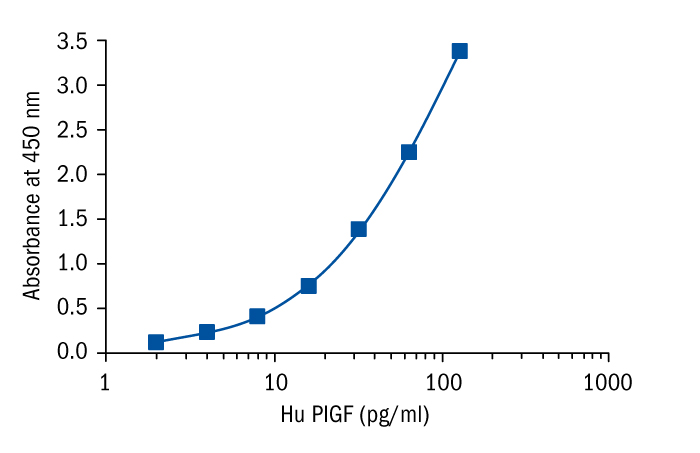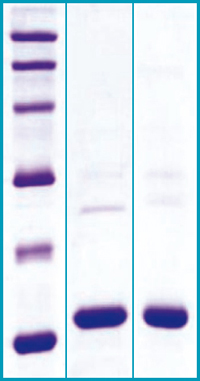Update 2026: miREIA assay kits have been discontinued as of January 1, 2026. The microRNA project now continues exclusively on the Two-Tailed RT-qPCR (TT-PCR) platform.

Dear customer, we would like to introduce our new products from January 2019 and hope you will find them interesting. Below is a list of events, in which we plan to participate in 2019:
MEDLAB 2019 (4 \ 2 \ 2019 - 7 \ 2 \ 2019 – Dubai)
NEW miREIA KITS
| CAT. NO. | STATUS | NAME | ASSAY FORMAT |
| RDM0007H | New | hsa-miR-15a-5p miREIA | miREIA – miRNA enzyme immunoassay |
| RDM0025H | New | hsa-miR-136-5p miREIA | miREIA – miRNA enzyme immunoassay |
| RDM0024H | Coming soon | hsa-miR-146a-3p miREIA | miREIA – miRNA enzyme immunoassay |
Featured product: hsa-miR-136-5p miREIA
miR-136-5p may play different roles in various types of human cancer.
It has been found that miR-136-5p acts as a tumor suppressor and its deficiency induces chemoresistance in ovarian cancer. Another study showed that miR-136-5p might act as a negative regulator in colon cancer progression. Expression of miR-136-5p in osteosarcoma tissues and cell lines was dramatically decreased compared with corresponding noncancerous tissues and cell lines, respectively. In hepatocellular carcinoma, downregulation of miR-136-5p may be responsible for carcinogenesis and aggressiveness of the disease.
In contrast, miR-136-5p acts as an oncogene in non-small cell lung cancer and is upregulated in lung cancer tissues and cell lines compared to their noncancerous counterparts. Expression of miR-136-5p was also shown to be aberrantly upregulated in gastric cancer tissues and cell lines and suppression of miR-136-5p inhibited proliferation and invasion in gastric cancer cell lines.
Decreased plasma miR-136 levels were measured in knee osteoarthritis patients when compared to healthy controls. Significantly higher expression levels of miR-136-5p in exosomes were observed in patients with preeclampsia compared to normal pregnancies.
To learn more about this assay and/or other BioVendor miREIA kits, please visit www.biovendor.com/mirna.
microRNAs (miRNAs) are single-stranded non-coding RNA molecules with a length of 19-23 nucleotides. They play a role in negative posttranscriptional regulation by binding to complementary sequences on mRNA and blocking translation into protein.
miREIA is a BioVendor proprietary method based on combination of immunoassay and molecular biology principles. Its main advantage is the quantitative determination of miRNA concentrations.
See more about hsa-miR-136-5p miREIA.

NEW IMMUNOASSAYS
| CAT. NO. | SPECIES | NAME | ASSAY FORMAT |
| RD191480200R | Human | Endocan ELISA | Sandwich ELISA, Biotin-labelled antibody |
| RD191390200R | Human | Placental Growth Factor ELISA | Sandwich ELISA, Biotin-labelled antibody |
| RIG025R | Human | WISP-1 ELISA | Sandwich ELISA |
Featured product: HUMAN PLACENTAL GROWTH FACTOR ELISA
sFlt-1/PlGF ratio - a tool for prediction and diagnosis of preeclampsia!
Placental Growth Factor (PlGF) and soluble Fms-like tyrosine kinase 1 (sFlt-1) are angiogenic factors that were reported to play an important role in pathogenesis of preeclampsia. Maternal serum levels of PlGF and sFlt-1 are altered even before the onset of the disease.
Recently, in a multicenter, prospective study – PROGNOSIS (Prediction of short-term outcome in pregnant women with suspected preeclampsia) the sFlt-1/PlGF ratio proved to be a helpful tool in
- enabling clinicians to exclude preeclampsia for 1 week with very high confidence,
- reassuring women suspected of having the disease that it is safe to go home,
- screening models including PlGF as one of the components enabling early-onset preeclampsia prediction.
PlGF expression is a part of the angiogenic switch that supports tumor vascularization. In most cancers such as renal cell carcinoma, colorectal, lung, gastric, breast and hepatocellular cancers, a positive correlation between cancer severity and PlGF mRNA expression and protein blood levels was observed, with an inverse relationship between PlGF and survival.
Angiogenesis also plays a key role in atherogenesis and many studies indicate that PlGF might be a biomarker for atherosclerosis, particularly plaque instability, myocardial ischemia, and for prognosis of the patients with cardiovascular disease. Accelerated atherosclerosis is one of the consequential complications of chronic kidney disease and hemodialysis and PlGF levels in serum and urine have been described to be increased in these patients with decreased renal function.
- Validated for human serum, plasma (EDTA, citrate, heparin), urine, cerebrospinal fluid (CSF) and amniotic fluid
- Excellent sensitivity (LOD 0.8 pg/ml)
- Complementary Human sVEGF-R1/FLT-1 ELISA is also available from BioVendor

See more about Placental Growth Factor Human ELISA
RELATED PRODUCTS
RAF121R sVEGF-R1/FLT-1 Human ELISA

NEW PROTEINS
| CAT. NO. | SPECIES | NAME | SIZE | SOURCE |
| RD162034025 | Human | Clusterin NATIVE | 0.025 mg | Human serum |
| RD176034100 | Human | Clusterin, Tag free | 0.1 mg | HEK293 |
| RD272009025 | Mouse | Cystatin C | 0.025 mg | E. coli |
Featured product: MOUSE CYSTATIN C, E. COLI
Cystatin C is a non-glycosylated basic single-chain protein consisting of 120 amino acids with a molecular weight of 13.36 kDa and is characterized by two disulfide bonds in the carboxy-terminal region. It is encoded by the CST3 gene.
It belongs to the cystatin superfamily which inactivates lysosomal cysteine proteinases, e.g. cathepsin B, H, K, L and S.
Cystatin C is mainly used as a biomarker of kidney function. Serum Cystatin C seems to be better marker of glomerular filtration rate than creatinine. On the other hand, low concentration of Cystatin C represents a risk factor for secondary cardiovascular events. Its increased level has been found in patients with autoimmune diseases, with colorectal tumors and in patients on dialysis.
Imbalance between Cystatin C and cysteine proteinases is associated with inflammation, renal failure, cancer, Alzheimer’s disease, multiple sclerosis and hereditary Cystatin C amyloid angiopathy.
These severe diseases are extensively studied using experimental mouse models. BioVendor Recombinant Mouse Cystatin C protein is suitable for such studies.
BioVendor Mouse Cystatin C is a recombinant protein expressed in E.coli. The Mouse Cystatin C consists of 134 AA. MW: 15 kDa (calculated).
UniProtKB acc.no. P21460. N-terminal His-tag (14 extra AA). Endotoxin < 1.0 EU/μg. Protein identity was confirmed by LC-MS/MS.

12% SDS-PAGE separation of Mouse Cystatin C:
1. M.W. marker – 14, 21, 31, 45, 66, 97 kDa
2. reduced and heated sample, 5 μg/lane
3. non-reduced and non-heated sample, 5 μg/lane
See more about Cystatin C Mouse E. coli
RELATED PRODUCTS
RD491009100R Cystatin C Canine ELISA
RD191009100 Cystatin C Human ELISA
RD291009200R Cystatin C Mouse ELISA
RD391009200R Cystatin C Rat ELISA
RD472009100 Cystatin C Canine E. coli
RD172009100-H Cystatin C Human E. coli
RD172009100 Cystatin C Human NATIVE, Human Urine
RD372009100 Cystatin C Rat E. coli
RD181009100 Cystatin C (E.coli) Human, Rabbit Polyclonal Antibody
RD184009100 Cystatin C (E.coli) Human, Sheep Polyclonal Antibody
RD481009100 Cystatin C Canine, Rabbit Polyclonal Antibody
RD484009100 Cystatin C Canine, Sheep Polyclonal Antibody
RD181009220-01 Cystatin C Human, Rabbit Polyclonal Antibody
RD181009220 Cystatin C Human, Rabbit Polyclonal Antibody
RD184009220 Cystatin C Human, Sheep Polyclonal Antibody
RD281009100 Cystatin C Mouse, Rabbit Polyclonal Antibody
RD284009100 Cystatin C Mouse, Sheep Polyclonal Antibody
RD384009100 Cystatin C Rat, Sheep Polyclonal Antibody
BioVendor News Let's keep in touch!
Click to sign up for our newsletter to receive regular updates: NEWLETTER
More information about your data protection rights can be found at Privacy Policy

